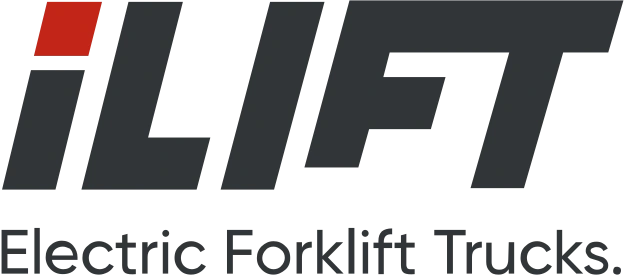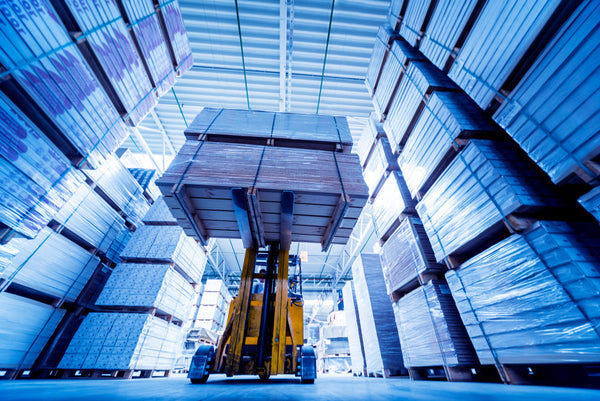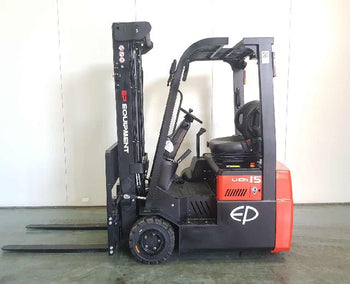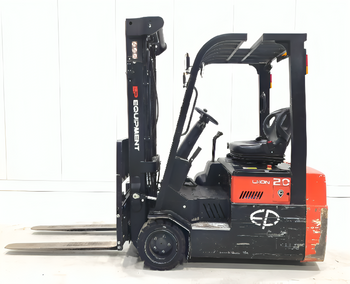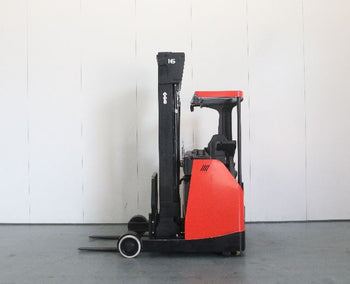For over a century, forklift trucks have been moving heavy loads and performing tasks that humans never could. They’ve become society’s go-to industrial workhorse and operate in a huge range of settings including warehouses, factories, shipping docks and more.
Forklift truck design has greatly evolved over the years, and many different types are available to suit your needs. But whether it’s an electric forklift or rough terrain, most forklifts are constructed from similar components and share identical parts.
Below, we’ll highlight the main parts of a forklift truck and explain the role of each component within these powerful industrial machines.
What are the Key Parts of a Forklift Truck?
Like all industrial machinery, forklifts are comprised of many moving parts. Getting to know these parts and understanding forklift terminology is important for both their operation and ongoing maintenance.
Here, we explore the key parts of a forklift truck and explain the main differences between traditional diesel-powered forklifts and zero-emission electric forklifts with their greater focus on sustainability.
A typical forklift truck is made up of the following parts:
1. The Chassis
The chassis of a forklift truck is like those found in cars and other vehicles. It’s a robust, metal frame that other components are attached to within the truck. These components include the engine or battery, operator cab, counterweight and wheels.
2. The Battery or Engine Compartment
Forklift trucks are powered by either an engine or a battery. While older combustion engines typically use diesel, petrol or propane, battery-powered forklifts can recharge their motor with electricity, making them a highly popular choice for eco-conscious operators. The power source itself is generally located under the operator’s seat towards the rear.
3. The Operator Cab
The operator cab is where the forklift operator sits or stands when using the vehicle. Most operator cabs contain a seat for the operator to sit on when controlling the truck, though some cabs are designed for the operator to stand.
Operator cabs can be open or closed depending on the model. A typical operator cab includes all the main controls for driving the truck, the steering wheel, lights, horn, and overhead guard which provides vital safety protection for the operator. The cab usually contains the following components:
|
Levers to control the mast |
Steering wheel |
|
Levers to control the forks |
Dashboard and switches |
|
Overhead guard |
Accelerator pedal |
|
Horn |
Brake pedals |

4. The Counterweight
The counterweight keeps a forklift balanced and stable when in operation. Installed on the rear of the vehicle within the truck frame, the counterweight is a vital component for ensuring the safety of the load, machine and its driver.
Not only does the counterweight keep the load stable, but it also prevents the forklift from tipping when lifting heavy objects. For example, when the forks move by raising or lowering, the distribution of the weight changes so the vehicle remains solid and stable.
5. The Master Controls
The forklift operator must learn the master controls and their functions to operate the machine safely and effectively. Operator cabs often have different layouts depending on the type of forklift it is. Therefore, master controls may be in different locations around each specific forklift model.
However, most forklifts feature several common master controls:
|
Hydraulic lift: |
Forward and reverse: |
|
Accelerator and brake: |
Parking brake: |
6. The Overhead Guard
One of the most important critical safety features of a forklift is the overhead guard. Also called the Falling Object Protective Structure (FOPS), this vital piece of safety equipment is fitted to the chassis of the forklift above the operator, protecting them from any dangerous falling objects, materials, or debris from overhead.
Even though forklifts are designed to minimise the risk of falling loads and objects, they can still occur due to accidental bumps, uneven surfaces, or unsecured loads. Should this happen, the overhead guard becomes a vital protective barrier and prevents accidents and injuries. As always, loads should always be safely and properly secured before operating a forklift.
7. The Forklift Mast
Typically located on the front of the vehicle in clear sight of the operator, the forklift mast is the raised vertical support that enables the forklift to raise or lower loads.
The common components of a forklift mast are:
Lift cylinder
The lift cylinder gives the forklift the power it needs to lift loads. It powers the vertical movement of the mast which enables the carriage and forks to move up and down. Often powered by a single-way hydraulic unit, the lift cylinder generally pushes in one direction only.
Forks
Among the key parts of a forklift truck are the forks. Mostly located at the front of the machine, they connect to the carriage and enable the operator to pick up and transport loads. Forklift forks are also known as the tynes, are they are in direct contact with the load and come in a wide range of widths, lengths and sizes.
Load backrest
Attached to the carriage, the load backrest prevents loads from slipping backwards and potentially injuring the operator while the forklift is moving or lifting. The operator can rest the load against the backrest, so the weight is evenly distributed, while also protecting the forklift mast and components from damage.
Carriage
Located on the front of the mast, the carriage is the platform where the forks and other attachments are mounted to the vehicle. It also includes the load backrest and other parts of a forklift truck in direct contact with the load. There are five classes of forklift carriage depending on the machine’s carrying and lifting capabilities.
8. The Drive Axle
The drive axle is where the drive wheels are located. This tends to be at the front of the machine. The drive axle provides the power required to drive the forklift forward and back, but it doesn’t steer the vehicle.
9. The Steer Axle
Working independently of the drive axle, the steer axle is located by the truck’s back wheels. The axle allows the forklift to turn left and right, helping the operator steer the vehicle in the right direction.
10. The Tyres
Forklift tyres typically come in two varieties: pneumatic tyres and cushion tyres. The tyre you need depends on what you’re using the forklift for and where it will operate. For example, pneumatic tyres are more suited to outdoor tasks thanks to their superior traction. However, if you’re working on flat indoor surfaces like concrete, asphalt or a warehouse floor, rubber cushion tyres are probably better.
11. The Capacity Plate
The capacity plate, also called the nameplate or data plate, contains vital safety information about the forklift such as the load capacity, truck make and model, weight, mast height, load centre, tilt degrees, tyre details, tread width and serial number. This information helps the operator understand the vehicle’s capabilities and avoid potential accidents.
Now You Know the Key Parts of a Forklift Truck, Browse the Full Range of Electric Forklift Trucks from iLift
At iLift, we stock a huge range of EP lithium forklift trucks from some for sale and both long and short-term rental. With everything from pallet trucks and stackers, to order pickers and more. Contact us today.
